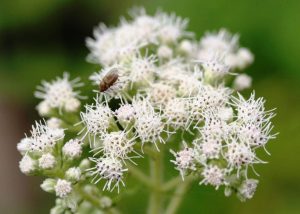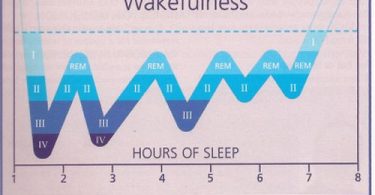Are you looking for a homeopathic cure for malaria? This article discusses the homeopathy treatment of malaria along with the best homeopathic medicine for malaria treatment.
Intermittent Fever is usually a sign of Malaria but Fever with Shivering and Chill can also be found in Viral Fevers, Urinary Tract Infections, Septicemia.
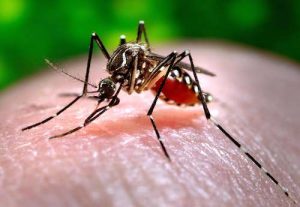 Malaria is a protozoal disease caused by infection with parasites of the genus plasmodium and transmitted to man by certain species of infected female anopheline mosquito. There are over 400 species of Anopheles mosquitoes, of which perhaps 60 can carry malaria.
Malaria is a protozoal disease caused by infection with parasites of the genus plasmodium and transmitted to man by certain species of infected female anopheline mosquito. There are over 400 species of Anopheles mosquitoes, of which perhaps 60 can carry malaria.
The clinical features of malaria vary from mild to severe and complicated. It is a acute febrile illness characterized by paroxysm of fever and chills as a result of asexual reproduction of plasmodia with in the red cells.
Plasmodium vivex, plasmodium ovale and plasmodium malariae are associated with morbidity but no major mortality; plasmodium falciparum is the parasite responsible for some fatal malaria.
When parasite bites a person it injects the parasites in to the body. It only takes a single mosquito bite to become infected. As the parasite exists in human red blood cells, malaria can be pass on from one person to next person through organ transplant, Shared use of needle/ syringes and blood transfusion.
What happens in Malaria –
Malaria infection develops via two phases:
- Exo-erythrocytic phase – that involves the liver
- Erythrocytic phase- that involves red blood cells, or erythrocytes.
When an infected mosquito pierces a person’s skin sporozoites from mosquito’s saliva enter the bloodstream and migrate to the liver where they infect liver cells, multiplying asexually and asymptomatically for a period of 8–30 days.
After a dormant period in the liver, these organisms differentiate to yield thousands of merozoites, which, following rupture of liver cells, escape into the blood and infect red blood cells to begin the erythrocytic stage of the life cycle. Within the red blood cells, the parasites multiply further again asexually, periodically breaking out of infected red blood cell to invade fresh red blood cells.
Malaria treatment with homeopathy
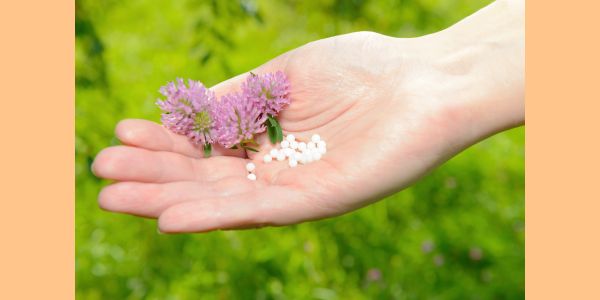
Homeopathy is one of the most popular holistic systems of medicine. The selection of homeopathic medicine for malaria is based upon the theory of individualization and symptoms similarity by using holistic approach. This is the only way through which a state of complete health can be regained by removing all the sign and symptoms from which the patient is suffering.
The aim of homeopathic medicine for malaria is not only confined to malaria treatment but to address its underlying cause and individual susceptibility. As far as therapeutic medication is concerned, several medicines are available for malaria treatment that can be selected on the basis of cause, sensation, extension and modalities of the complaints.
For individualized remedy selection and treatment, the patient should consult a qualified homeopathic doctor in person. Some important remedies are given below for the malaria treatment:
China, Arsenic Album, Eupatorium Perf, Natrum Mur, Pulsatilla, Bryonia, Gelsemium, Rhus Tox, Apis Mel, Nux vomica, Malaria Off, Veratrum Alb, Caladium, Cimex, Ferrum Phos and many other medicines.
Malaria / Intermittent Fever – Homeopathic Medicines
(Therapeutic Indications by W.A. Dewey)
Cinchona / China officianalis
 This homeopathic medicine for malaria is most suitable in epidemic and endemic form of chills and fever, being of little if any use in the general malarial cachexia.
This homeopathic medicine for malaria is most suitable in epidemic and endemic form of chills and fever, being of little if any use in the general malarial cachexia.- The paroxysms are irregular and it corresponds more to the tertian type, if to any. The precursory symptoms to the chill are nervous excitement, anxiety, headache, nausea and irritability.
- The chill is of short duration and it soon becomes mingled with the heat, and the remedy may be said to be one of the thirstless remedies in fever, as there is very little, if any, thirst during the chill and no real thirst during the heat, it being from a desire to moisten the mouth, rather than to quench the thirst, that the patient may desire water.
- During the fever the veins appear enlarged and there is congestion to the head, redness and heat of face, even though other parts of the body be chilly. During the chill the patient sits near the fire and wraps himself up, but the warmth obtained does no good. During the sweat, however, which is long and profuse, there is much thirst.
- Cinchona is seldom of use in inveterate cases, where the liver and spleen are hypertrophied or where much quinine has been taken, though a swollen spleen does not contra-indicate the remedy. The apyrexia is marked with debility, restlessness, loss of appetite or great hunger, anaemia, gray complexion, congestions, backache and oedema, scanty urine with brickdust sediment.
Nux vomica
- Nux vomica is homeopathic medicine for malaria not so much indicated in inveterate cases, but it corresponds to cases where the gastro-bilious symptoms are prominent, and accompanied by nervous symptoms proceeding from the spinal cord. The chill is perhaps more commonly quotidian, coming on in the afternoon and evening.
- The chill is predominant and starts with blueness of the fingernails, preceded by aching of the body, gaping and yawing, there being no special thirst, but a dull frontal headache and vertigo and nausea, disordered stomach and weakness of the limbs.
- There is no relief from covering or from external heat, and another condition may be an alternation of chills and heat.
Eucalyptus globulus. Also useful in some forms. There are no characteristic indications.
Pulsatilla. Long chill, little heat and no thirst.
Menyanthes. Chill predominates without thirst; icy coldness of finger tips.
Ignatia. Warmth from stove relieves; thirst only during chill.
Lachesis. Desires heat, but no relief therefrom. A most important remedy after abuse of quinine.
Carbo vegetabilis. Old cases, with coldness of feet. Extreme prostration; desire for air draft.
China-officinalis
- Fever intermittent, paroxysms anticipate; return every week. Periodicity is most marked
- All stages well marked.
- Chill generally in forenoon, commencing in breast; thirst before chill, and little and often.
- Debilitating night-sweats.
- Free perspiration caused by every little exertion, especially on single parts.
- Stomach tender, cold. Vomiting of undigested food. Slow digestion. Weight after eating.
Apis mellifica
- Afternoon chill, with thirst; worse on motion and heat.
- External heat, with smothering feeling.
- Sweat slight, with sleepiness.
- Perspiration breaks out and dries up frequently.
- Sleeps after the fever paroxysm.
- After perspiration, nettle rash, also with shuddering.
- Apathy, indifference, and unconsciousness.
- Awkward; drops things readily.
- Stupor, with sudden sharp cries and startings.
- Stupor alternating with erotic mania.
- Sensation of dying. Listless; cannot think clearly.
Arsenic album
- High temperature.
- Periodicity marked with adynamia.
- Septic fevers. Intermittent.
- Paroxysms incomplete, with marked exhaustion.
- Cold sweats.
- Complete exhaustion.
- Delirium; worse after midnight.
- Great restlessness.
- Great heat about 3 am.
- Great anguish and restlessness. Changes place continually.
- Fears, of death, of being left alone. Great fear, with cold sweat. Thinks it useless to take medicine.
Gelsemium
- Patient wants to be held, because he shakes so.
- Pulse slow, full, soft, compressible.
- Chilliness up and down back. Heat and sweat stages, long and exhausting.
- Dumb-ague, with much muscular soreness, great prostration, and violent headache.
- Bilious remittent fever, with stupor, dizziness, faintness; thirstless, prostrated.
- Chill, without thirst, along spine; wave-like, extending upward from sacrum to occiput.
- Desire to be quiet, to be left alone.
- Dullness, languor, listless. “Discernings are lethargied. “
- Apathy regarding his illness.
Chininum sulphuricum
- This homeopathic medicine for malaria has great periodicity.
- Chill towards evening with slight or violent thirst.
- After the sweat there is much prostration.
- Great weakness at the epigastrium and debility.
- During the paroxysm a pain in the dorsal vertebrae on pressure is a good indication.
Natrum muriaticum
- This is a remedy seldom of use in recent cases corresponding more too inveterate and badly treated cases.
- The stages are very unequal, the chill perhaps being continuous, heat moderate with violent headache, and perspiration wanting or excessive and debilitating and relieving the headache.
- The complexion is yellowish gray and the spleen and liver are enlarged.
- Perhaps the most typical case calling for this remedy would have a chill commencing about ten o’clock in the morning.
- Chill beginning in the back and feet with great thirst pains in the bones, pains in the back, headache, debility, accompanied with shortness of breath; and especially if fever blisters on the lips; this is most characteristic.
- Such patients during the apyerxia the apyrexia are dejected and apprehensive, have a swallow complexion and white coated tongue, sleepy in the daytime and sleepless at night.
Eupatorium perfoliatum
- The bone pains and the vomiting as the chill passes off are the chief characteristics of this remedy.

- There are gastric symptoms similar to Ipecac; there is muscular soreness all over the body, and the chill is apt to occur on the morning of one day and in the evening of the next; it is preceded by thirst and bitter vomiting.
- The patient knows the chill is coming on because he cannot drink enough, the chill commences in the small of the back and is accompanied with a sense of pressure over the skull cap.
- Bayes considers this pressure and weight over the forehead the surest indication for the remedy.
- With the heat, the aching increases and the sweat is inconsiderable or absent.
- The paroxysms calling for Eupatorium are irregular in their development.
- The liver is at fault and there is a yellow tinge to the complexion.
Ipecac
- In the milder epidemics where the tertian form predominates, Ipecac may prove useful.

- The chill is most marked and the fever is accompanied with the gastric symptoms, loss of appetite, loathing of food, nausea, vomiting and diarrhea.
- It is often the remedy in the beginning of intermittents, suiting especially sensitive young patients.
- The thirst is wanting or slight during the chill and the chill predominates; the heat is trifling and the sweat is usually missing , or there may be a short chill and long fever.
- During the paroxysms there may be a suffocative cough and spasmodic dyspnoea.
- During the apyrexia there are many gastric symptoms, sallow skin, headache, nausea and vomiting.
- It is the remedy when the case seems all mixed up; a few doses will often clear the case and lead to the proper remedy.
What causes Malaria ?
Malaria parasites belong to the genus Plasmodium. In humans, malaria is caused by four species of plasmodium parasite-
- Falciparum – most common infection, nearly 75% of all infections.
- Malariae – second most common cause of malaria, about 20%.
- Ovale
- Vivax
Clinical features of Malaria
The pathology in malaria is due to destruction of infected red cells and adherence of infected red blood cells to capillaries.
- Falciparum infection: This is the most dangerous of the malarias. The onset is often insidious, with malaise, headache and vomiting, and is often mistaken for influenza. Cough and mild diarrhoea are also common. The fever has no particular pattern. Jaundice is common due to haemolysis and hepatic dysfunction. The liver and spleen enlarge and become tender, and anaemia develops rapidly.
- Vivax and P. ovale infection: In many cases the illness starts with several days of continued fever before the development of classical bouts of fever on alternate days. Fever starts with a rigor. The patient feels cold and the temperature rises to ~40°C. After half an hour to an hour the hot or flush phase begins. It lasts several hours and gives way to profuse perspiration and a gradual fall in temperature. The cycle is repeated 48 hrs later. Gradually the spleen and liver enlarge and may become tender. Anaemia develops slowly. Relapses are frequent in the first 2 yrs after leaving the malarious area.
- Malariae infection: This is usually associated with mild symptoms and bouts of fever every 3rd day. It may persist in blood for many years with the occasional recrudescence of fever, or without producing any symptoms. P. malariae causes glomerulonephritis and the nephrotic syndrome in children.
Diagnosis of Malaria
- Clinical diagnosis is based on the patient’s symptoms and on physical findings at examination.
- Microscopic examination – Malaria parasites can be identified by examining under the microscope a drop of the patient’s blood, spread out as a “blood smear” on a microscope slide.
- Rapid Diagnostic Tests – (RDTs) offer a useful alternative to microscopy in situations where reliable microscopic diagnosis is not available.
- PCR – Parasite nucleic acids are detected using polymerase chain reaction (PCR). Although this technique may be slightly more sensitive than smear microscopy.
Conventional treatment of Malaria
Malaria is treated with antimalarial medications. Simple or uncomplicated malaria may be treated with oral medications.
The most effective treatment for P. falciparum infection is the use of artemisinins in combination with other antimalarials (known as artemisinin-combination therapy, or ACT), which decreases resistance to any single drug component.
Additional antimalarials include: amodiaquine, lumefantrine, mefloquine or sulfadoxine/pyrimethamine. Another recommended combination is dihydroartemisinin and piperaquine.
Side effects of Antimalarial medication
| Drug | Most important side effects |
| Chloroquine or hydroxychloroquine | Irreversible retinopathy!
CNS: agitation, anxiety, confusion Gastrointestinal discomfort |
| Primaquine | Neuropsychiatric abnormalities |
| Mefloquine | CNS: chills, dizziness, fatigue
Skin rashes Gastrointestinal discomfort |
| Atovaquone-proguanil | Gastrointestinal discomfort |
| Quinine | CNS: headache, mental status altered
Gastrointestinal discomfort Fever, flushing |
| Doxycycline or tetracycline | Photosensitivity
Nephro- and hepatotoxicity Damage to mucous membranes (these antibiotics should be taken with a lot of water) |
| Artemether-lumefantrine | Gastrointestinal discomfort |
| Quinidine | Palpitations, angina pectoris
dizziness, fatigue, headache Skin rash Gastrointestinal discomfort |
The above information about homeopathy treatment of malaria is only for information purpose. Please consult a professional homeopath before taking any homeopathic medicine for malaria.
Malaria / Intermittent Fever Cases Cured with Homeopathic Medicine
A Case of Intermittent Fever – by Edmund Carleton
Homeopathic Approach in Management of Malarial Fever -by Navin Pawaskar, Hini Joshi
Treating Acute Illness – Making Use of Laboratory Diagnosis and Nosodes -by Stephen John Smith



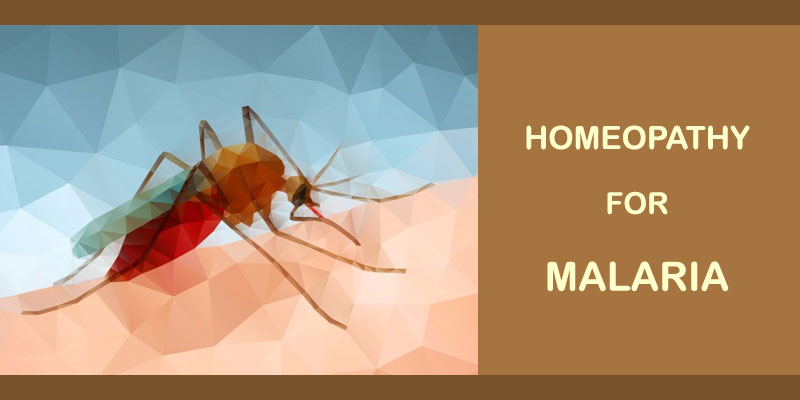
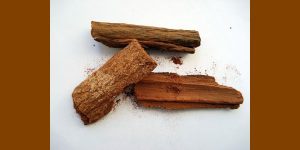 This homeopathic medicine for malaria is most suitable in epidemic and endemic form of chills and fever, being of little if any use in the general malarial cachexia.
This homeopathic medicine for malaria is most suitable in epidemic and endemic form of chills and fever, being of little if any use in the general malarial cachexia.